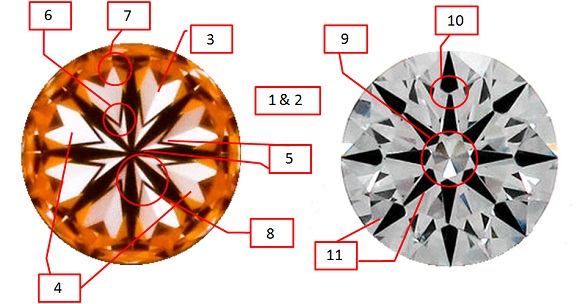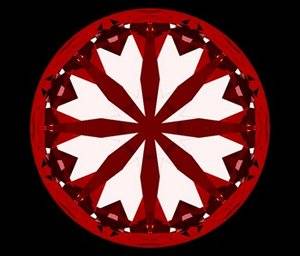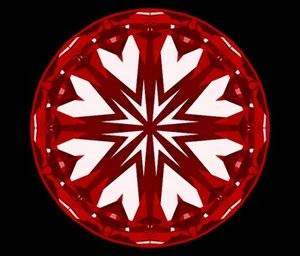- Joined
- Apr 3, 2004
- Messages
- 33,852
lower girdle %, when they get near 80 they start to cleft.Remind me how the clefts form...
So, IYO is my wife's stone a true H&A ? How do you do the calculation?Yes as I was taught it by Brian Gavin.
https://www.pricescope.com/articles/hearts_and_arrows_diamonds_and_basics_diamond_cutting
Quick Guide
- 8 equal uniformed symmetrical hearts.
- 8 distinct symmetrical Hearts that separate from the Arrowheads above. If above is correct check the following.
- Check if the hearts are split, measure length of heart then the length of the split.
- Calculate the % of the length split, if it is greater than 8% and there are more than 2 of them IT FAILS.

Yes, I know what 8% looks like, there are samples on that page.So, IYO is my wife's stone a true H&A ? How do you do the calculation?

3. Ideally speaking, coloration of the hearts is not permitted. While this feature is relatively minor, you should see a single color tone instead of 2 different shades of colors.
Yes, I know what 8% looks like, there are samples on that page.

2.Calculating the accuracy and Hearts you can measure the length as shown X_to_Y in 1a (A template tool can be used) say this is 10mm. If you see any splits in the cleft this is measured and it can be no longer than 8% of the total length of the heart as shown by Z to C in 2A. If there are more than 2 hearts split at more than 8% then it will not make the grade of True Hearts, in addition the arrow head must separate from the actual Heart.
Hey @Karl_K, what causes half the heart to be brighter white than the other half?
See below and item #3. Appears to be minor. Just curious why it happens.
https://beyond4cs.com/hearts-and-arrows/guidelines-for-optical-symmetry/

I'm not...just wondering what PSer's opinion on the tiny clefts, b/c some members say if there are tiny clefts then the stone can't be label as a true heart stone.It cracks me up that you are even worried about it.
The goal of h&a images is to show if the stone has optical symmetry and yours has a very high level of optical symmetry.
There are no universally accepted standards out there and there is a lot of drivel out there.I'm not...just wondering what PSer's opinion on the tiny clefts, b/c some members say if there are tiny clefts then the stone can't be label as a true heart stone.
I am having a hard time not being snarky. Not at you but at the source of that drivel.
Where does diamond color on a diamond come from when it isn't the material itself and it isn't fire?
Placement in the scope and or using the the pocket small diameter h&a scopes.
Yep :}Karl, am I remembering these from a long ago cutting discussion on Pricescope? If I am, I believe it was John Pollard who labeled the “Hearts and Darts.” A reflective function of lower-half choices.
Wink
Nada to be sorry about. :} its a fair question.Sorry. I understand your POV.
I was being a geek and thinking maybe they were inferring the shade difference was created by twisted facets, thereby reflecting the light slightly different.
H&a generally falls within 74 to 80With this in mind, what are your recommended lgh lengths for a great performing diamond that is optically symmetrical, but not necessarily an ideal H&A (which I believe fall within 76-78?). I am assuming all other PS-recommended facet proportions would remain the same. Also, how would an optically-symmetrical non-H&A compare visually irl to an H&A (same crown, pavilion, table, depth)-more/less fire, brilliance, scintillation? Or does lgh length not affect these?


Even within the h&a range there is some difference.Lgf will affect fire brilliance and scintillation, not necessarily any less than 'true' H&A. The values that give the H&A you know and love strikes a good balance of those features.
For example: With slightly deep pavilions under table leakage can be eliminated by longer lgf% and borderline obstruction issues can be helped by a longer lgf%.
it depends on what is in the averages.If I’m understanding correctly, a 34,41 combo could have less light leakage and obstruction with longer lgf% > 80? Conversely, could a 36,40.6 combo perform decently with lgf% < 75? Just trying to figure out “sweet spots” for those who want optical symmetry, but may not want to pay a premium for H&A or the gold standard of 34-35, 40.6-40.8 combos.